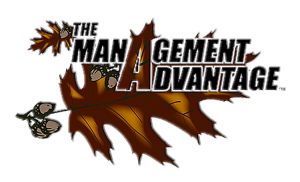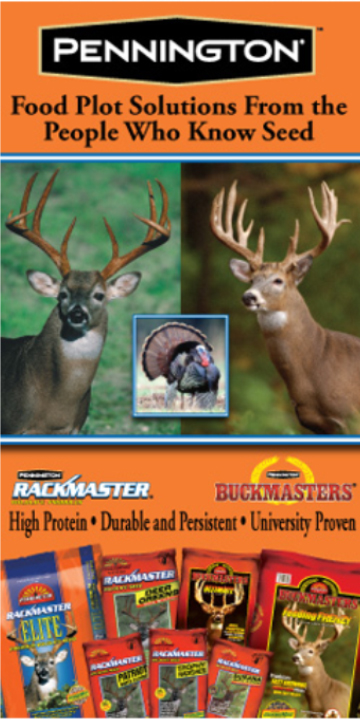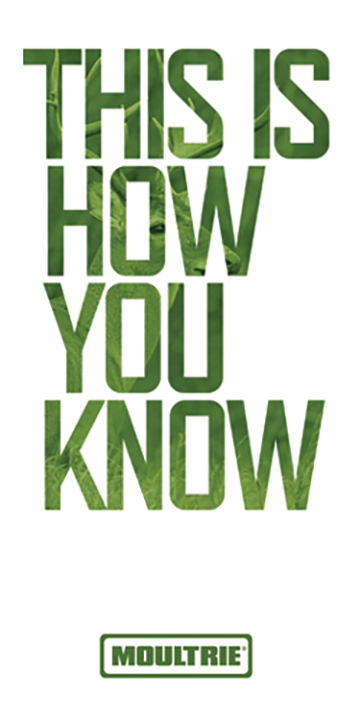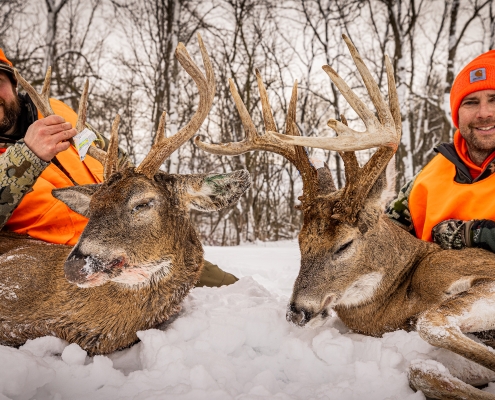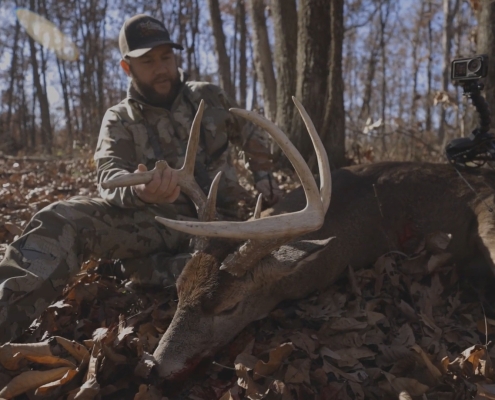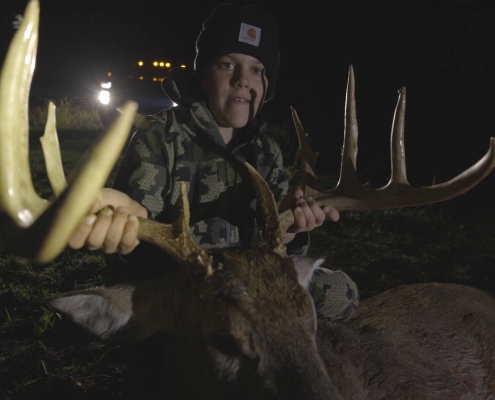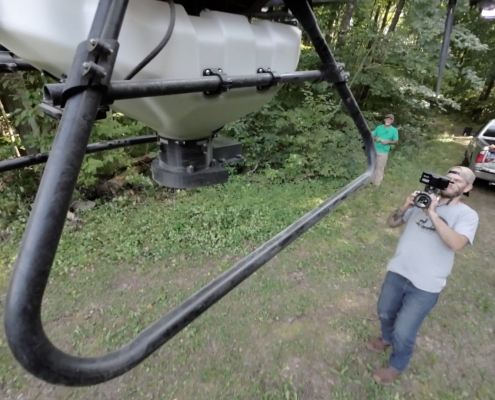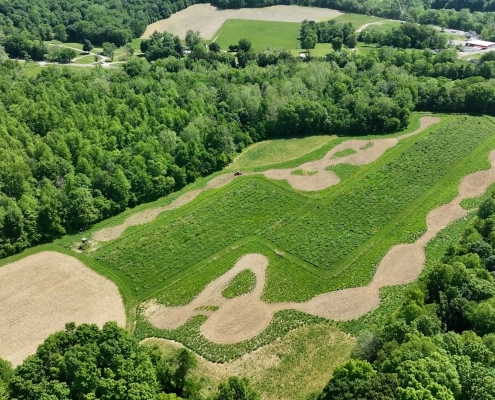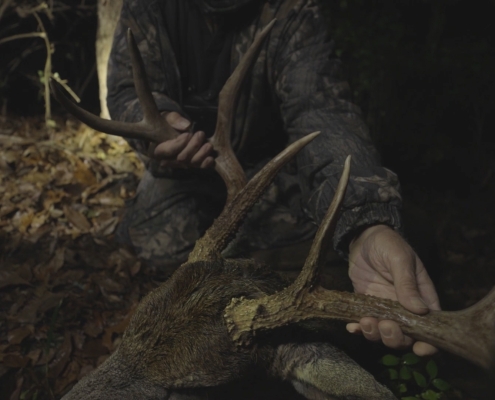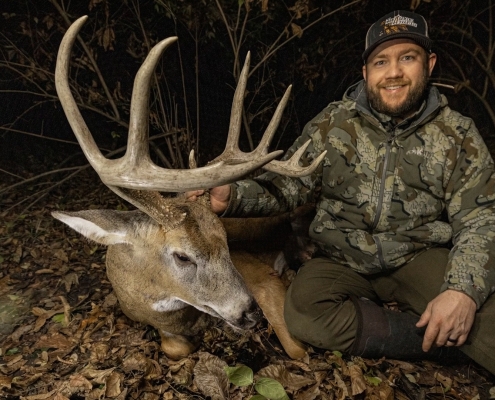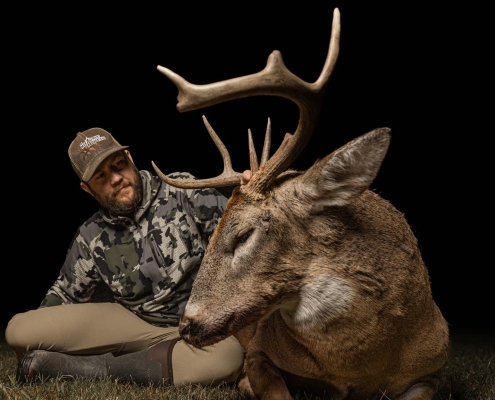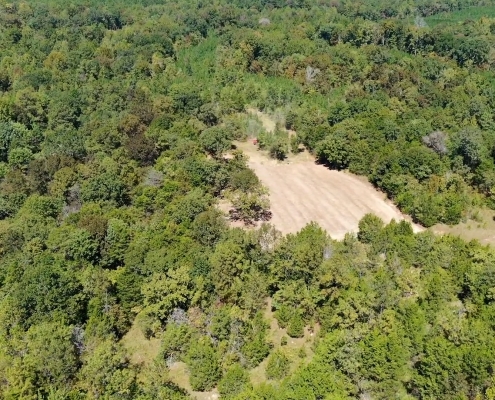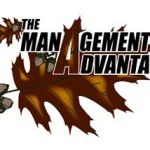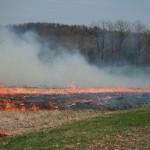Chuck Sykes – The Management Advantage Consulting and Erich Long – Drumming Log Wildlife Management
Where do you think the future of deer hunting or better yet, deer management is headed? Erich Long, a wildlife consultant from Ohio, handles quite a bit of our management work throughout the mid-west. He and I decided to team up and write a piece on that very subject.
We felt it was time to write an article from a consultants view. With that being said, we are going to give you a perspective of what we see is happening in the arena of wildlife management and especially deer management. Hopefully, it will give you some insight. It is not meant to be offensive to anyone, but sometimes though, the truth can hurt.
Chuck:
Late summer and early fall not only finds us preparing for the upcoming hunting season, but also attending many consumer outdoor shows. We truly enjoy manning our booth and talking with our viewers and clients about their land management needs. It is a time where we get to interact with the people that make The Management Advantage a successful television program. Throughout the year, we communicate with many people through email and phone conversations. But, there is no substitute for personal contact. Meeting our viewers and fans that are following the narrow path of hard work to establish their management plan is the energy I need to keep working to provide truthful and efficacious programs.
I can remember growing up and getting advice from my grandfather, father, football coach, and many other influential role models telling me that “anything worthwhile never comes easy.” How many of you have ever heard those words? Those have been truths that I have patterned my life by. However, today, in this world of instant gratification, it seems as if these words fall on deaf ears.
Whether you are talking about your job, marriage, or life in general, nothing is easy. It takes hard work and perseverance to succeed. The same holds true with wildlife or land management. At one consumer show in the summer of 2008, a food plot company and The Management Advantage were set up side by side. I overheard a conversation between a food plot company representative and a potential customer. That conversation prompted me to write this article. The question posed to the rep was as follows, “which one of these products will work well with no rain, very little seed bed preparation, and on rocky soil.”
How are you supposed to answer that question? Just because the bag has a deer on it and the company has spent a tremendous amount of money on research and development, it still takes work on the planter’s part to make it work. How many successful farmers do you know that plant in rocky soil, with no rain, and no soil preparation? Granted, as deer managers, we have to deal with less than perfect soil types and planting conditions in quite a few cases. But, common sense tells me that there is still quite a bit of work that must be done to produce a successful food plot.
Although there are products that are designed to work better in less than perfect situations, no one will argue the fact that it will not compete with a well managed field of clover or turnips. Not to beat a dead horse here, but we all should know by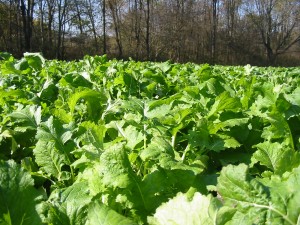 now that for a proper food plot, one must take soil samples, subsoil and prepare a proper seed bed, lime and fertilize accordingly, and finally plant the appropriate cultivar for the site. The same paradigm should be followed every year and on every plot to insure your management plan is characterized by dynamic and active processes that reciprocate the changes in nature and the objectives and goals you desire to obtain.
now that for a proper food plot, one must take soil samples, subsoil and prepare a proper seed bed, lime and fertilize accordingly, and finally plant the appropriate cultivar for the site. The same paradigm should be followed every year and on every plot to insure your management plan is characterized by dynamic and active processes that reciprocate the changes in nature and the objectives and goals you desire to obtain.
How many times has that been written in articles or featured on TV? But still, there are quite a few people looking for the magic bean that requires no effort to grow and produces mind blowing results. Quit looking; it is not there. There is a great variety of food plot products that work well in a wide range of conditions. However, work on the part of the food plot planter is still required for the products to produce the results printed on the packaging. When I am speaking about food plot planter, I am not talking about equipment. I am talking about the operator.
I feel safe in saying that the vast majority of deer managers and food plot planters want, as an end result, to grow bigger bucks with the hopes of harvesting a trophy. Again, this is not a project that is going to happen without work and commitment. It is impossible to harvest a mature “trophy” buck if he dies as a yearling. Remember, a trophy is in the eye of the beholder. A five year old buck is a trophy whether he scores 160 or 60. Most people have accepted the fact that it takes time to grow a mature buck and they don’t mind passing up younger bucks. The QDM movement has taught us that.
Since we understand that segment of deer management, why is it still so difficult to get someone to do the basic forms of management like taking a soil sample? Why do some still insist on feeding corn during the spring and summer months when we know deer need high protein food sources like the Cargill Record Rack Protein Pellets provide? Why is this? I’ll tell you why. It is too much trouble to spend an afternoon sweating in the summer sun taking soil samples and it is far too easy to pour corn in a trough because that is what has always been done.
Do you see what obstacles we face as consultants? We are blamed in many cases for deer management plans not going as planned. The truth is, the clients failed due to unrealistic expectations and trying to cut corners. This is also true of many companies in the outdoor industry. Seed companies take it on the chin more than most. I don’t know how many times I have spoken to people who are extremely critical of the “high priced” seed that they planted that turned into a complete failure. I would say 99 out of 100 times it was not the seeds’ fault. The person planting the plot failed, not the seed.
Erich:
Every year Ohio has an expo that I attend in Columbus that is geared toward deer and turkey hunters. It’s truly a wonderful event packed full of vendors and seminars. What’s really special about the event is the Buckeye Big Buck Club. They offer successful hunters the opportunity to bring their deer in and get them scored. It’s an amazing sight for horn hungry hunters.
Every year, I walk through the whole event looking at the latest gadgets or seed mix that guarantees results. My main objective is to walk through the area where all the massive antlered deer are hanging. Granted, I really enjoy gazing at those incredible deer, but my purpose in being there is to listen to the crowds. Every year without fail, I hear one or more people looking at some 160 class Pope and Young animal and saying, “oh, that’s just a 160.” What? I get so frustrated at such comments. That statement begs the question what have we or they become? Are we watching too much television and reading too many hunting magazines that we down size a 160 class animal?
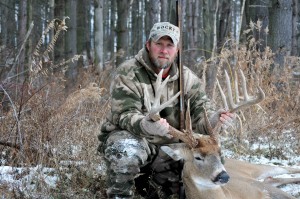 The blame should not fall with the hunting shows or the magazines. We as land managers and stewards of the land have to discern between entertainment and reality. This is where the statement “have realistic expectations” comes into play. How many of us can afford to own hundreds of acres in the Midwest or south Texas where the majority of these incredible bucks are taken? After that, how many of us can spend thousands of dollars each year managing the resource to produces those whoppers year after year? The answer is very few. However, we can all set reasonable goals and manage what we have to the best of our ability.
The blame should not fall with the hunting shows or the magazines. We as land managers and stewards of the land have to discern between entertainment and reality. This is where the statement “have realistic expectations” comes into play. How many of us can afford to own hundreds of acres in the Midwest or south Texas where the majority of these incredible bucks are taken? After that, how many of us can spend thousands of dollars each year managing the resource to produces those whoppers year after year? The answer is very few. However, we can all set reasonable goals and manage what we have to the best of our ability.
Hey, enjoy those shows and magazine articles about huge bucks being taken. I am addicted as well. Just understand that there is not a 160 inch buck hiding behind every tree. Even though we are fortunate to have great genetics and tremendous potential here in the mid west, it is not a gimme. We could be like Chuck who is dealing with land in the south that has sandy soil and a deer herd that is out of balance and overcrowded. Be thankful. We may not turn out a Booner each year on every property. But over time, we can grow very respectable bucks and improve the overall health and quality of our deer herd with proper deer management.
The last several years when doing seminars or managing land, I’ve been running into more and more that people believe all they have to do is put some bucket of mineral in the ground that guarantees results. Or, plant some quarter acre of “magic beans,” and they will have these massive animals running around. Then we show up as consultants and start talking crazy talk like they need to begin creating and / or managing their native forage, or they need to start taking weights, extracting jaw bones to age, and measuring fetuses to let them know if there doe management is in order. All those crazy things we like to call data. We discuss things like hunter management, and so on and so on. That’s when I get this deer in the headlights look, if you will, from the client. “Wait,” they say, “I have to do what again, and I thought my little food plot was enough.”
As a deer management consultant, you have to be educated on every aspect of the whitetail deer from soil to biology and everything in between. A great deal to know and remember, and some days, it changes by the second it seems! The one phenomenon that is forever changing when managing deer is each client or seminar group has a different opinion on hunting and management techniques. The most difficult part of my job, as a consultant, is trying to break through the dogma of information that the outdoor public have been subjected to through print and expositions. Although most of the information being assimilated to the public is good, there are many who feed the paradigm of immediate gratification. Nature is a dynamic, multi-faceted discipline that changes constantly. No quick fix will insure success. Land and wildlife stewards must weave a path through to find a consultant and plan that will work for them.
This is what I have been experiencing lately as deer management takes hold across the Midwest. People are confused and taken for a ride on what it really takes to produce quality whitetails. Qualified consultants are left picking up the pieces.
Chuck:
Please remember that quote from the beginning of the article, “anything worthwhile never comes easy.” There is no substitute for hard work and perseverance. Combine those two with realistic expectations and you will be a success in whatever you do. I can assure you, the reward of taking a deer, any deer, that you grew the right way, is worth the all the hard work.
